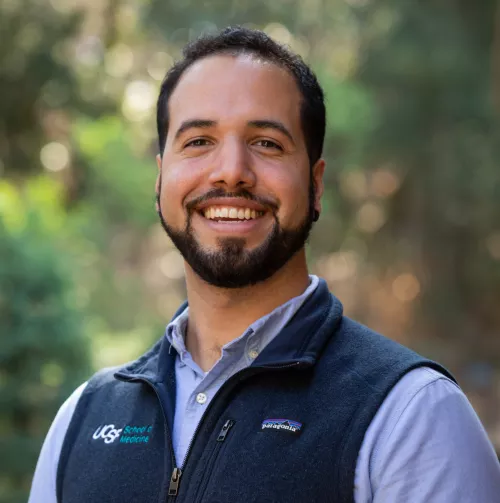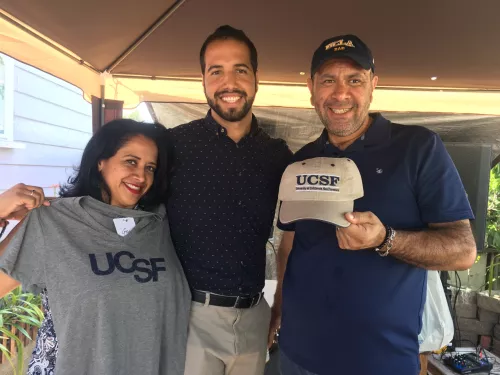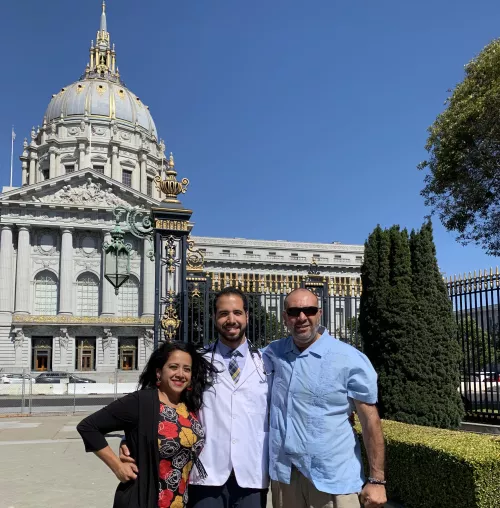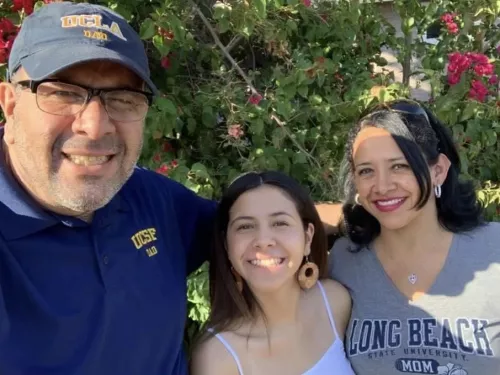As part of our Meet the Team series, we introduce you to one of our community members. Meet Ernesto Rojas, an MD-PhD student working with Diana Laird, PhD, and Tippi MacKenzie, MD, to study the origins of sacrococcygeal teratomas (SCTs). SCTs are germ cell tumors, and Ernesto’s project focuses on understanding the link between primordial germ cells (PGCs), pluripotency, and the disease states of these tumors.
He started medical school at UCSF in 2019 and has been actively involved in the Latinx Medical Student Association (LMSA) - Western Region, where he serves as Chief Information Officer. After graduation, he hopes to continue to work in early development as a surgeon-scientist.
Q. Tell us about yourself.
A. I am an MD-PhD student. I went to medical school for two years to learn about how the human body works. Currently, I am pursuing my PhD in the labs of Tippi MacKenzie, MD, and Diana Laird, PhD, studying sacrococcygeal teratomas (SCTs). SCTs are a tumor that grows in fetuses during early development. My goal is to understand how they arise and the biology that causes them. I then explore ways to help families who undergo resections of these tumors and follow up with patients investigating not only the biology of SCTs but also the interpersonal connections between families. What catapulted me on this journey of medicine and science was my curiosity. I was the first in my family to go to college and, when I began, I wanted to study biology. The question of where and how you begin — that you and I come from one cell into all of us — hooked me. I think it's my favorite question of all biology. Not surprisingly, for my PhD, I am working in the Developmental and Stem Cell Biology Program. Through this experience, I have learned skills and applied them to the question at hand for me, which is studying these tumors that grow in some fetuses called sacrococcygeal teratomas.
Q. Describe the motivation for your work.
A. The main drive of why I do my work is to help families with rare tumors. And I am particularly interested in the ways that asking questions will help families. Therefore, one of my primary actions is to go to removals of the tumors to get samples from patients who have consented to do so. Seeing and learning first-hand from the families is an interesting and critical aspect of understanding what happened and why it happened. So far, we don't have an answer to that inquiry. It is an honor to be part of the process, answering those questions for the families. Being both a physician and a scientist, each informs the other — how to ask questions that will affect these families and then answer them. As a physician, you have the potential to determine what questions are important to families. At UCSF, particularly the UCSF Broad Stem Cell Center, we can connect those two sides in an interesting and powerful way. I was always interested in development — the question of what happens in that developmental time? While most pregnancies follow a standard course, what happens when that does not go as expected — is an area that I think a lot of work can be done and should be done. And that's what I'm trying to do here.
Q. Share a fun/interesting fact about yourself.
A. I'm originally from Honduras. I was born there and came to the U.S. when I was three. I grew up in Los Angeles and am the first in my family to go to college, and very proud to be an immigrant. The first to be an MD-PhD. A fun fact about me is that when I was in college, I was on the TV game show The Price Is Right. I won some prizes and earned a year's supply of steak!




